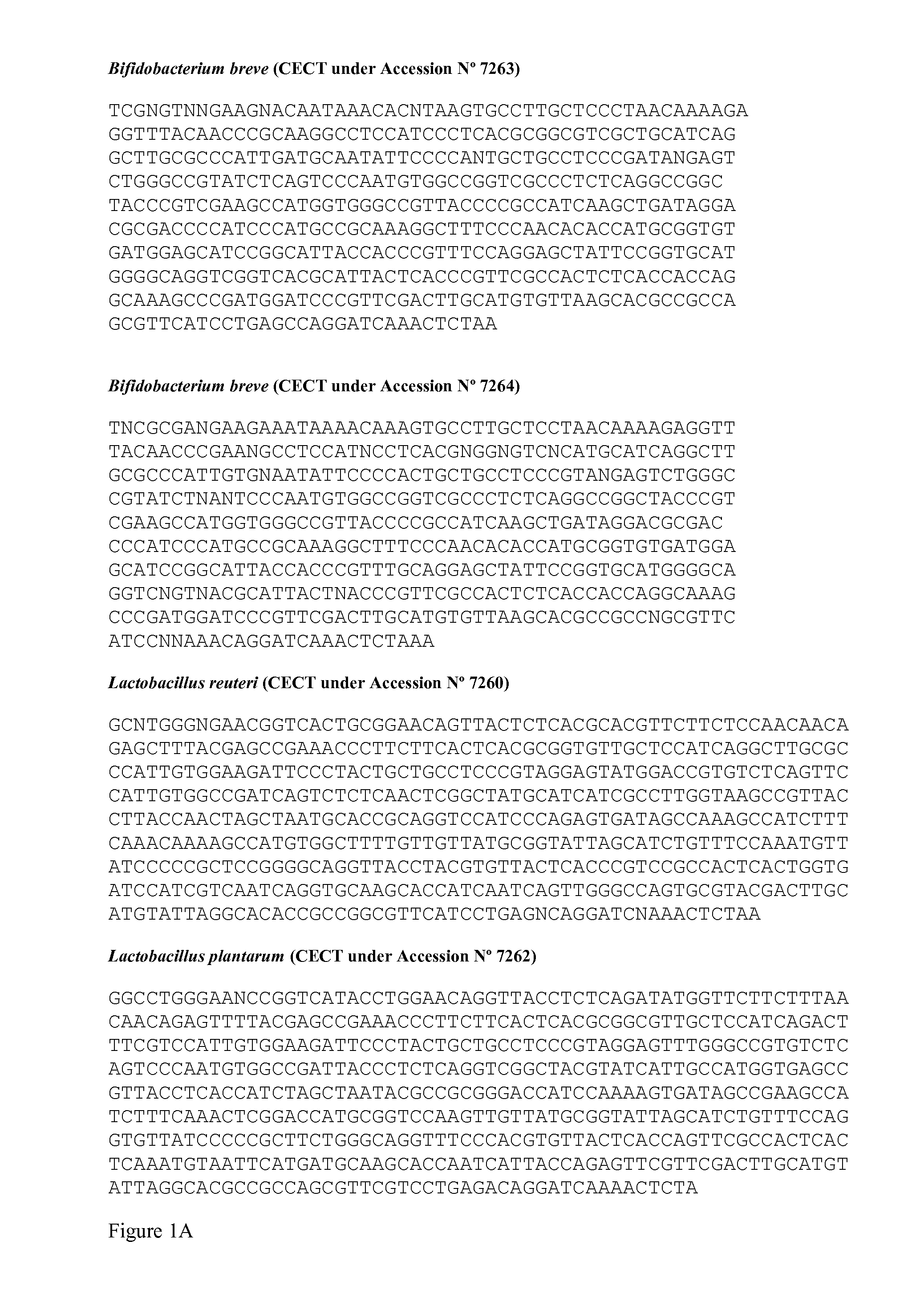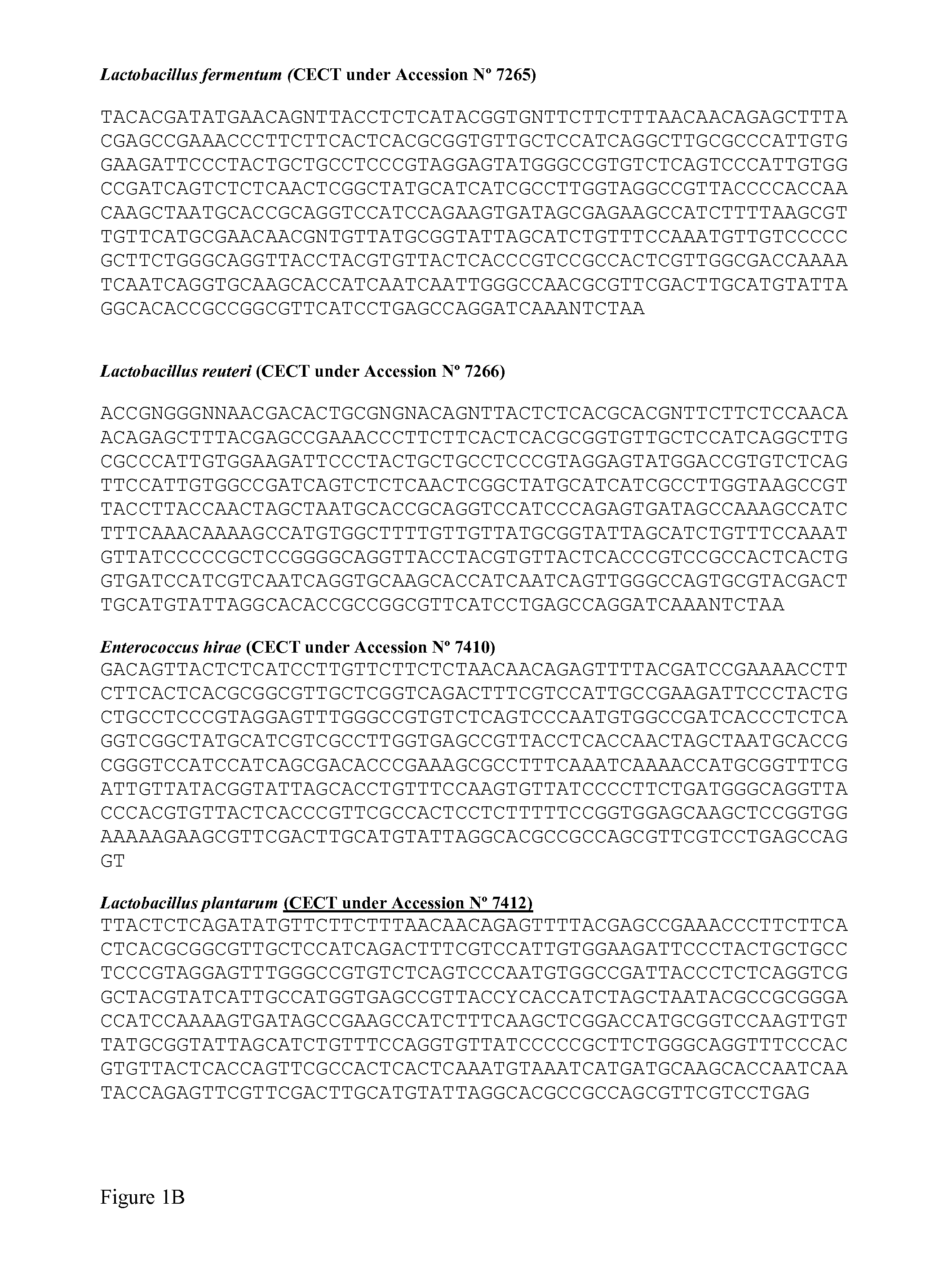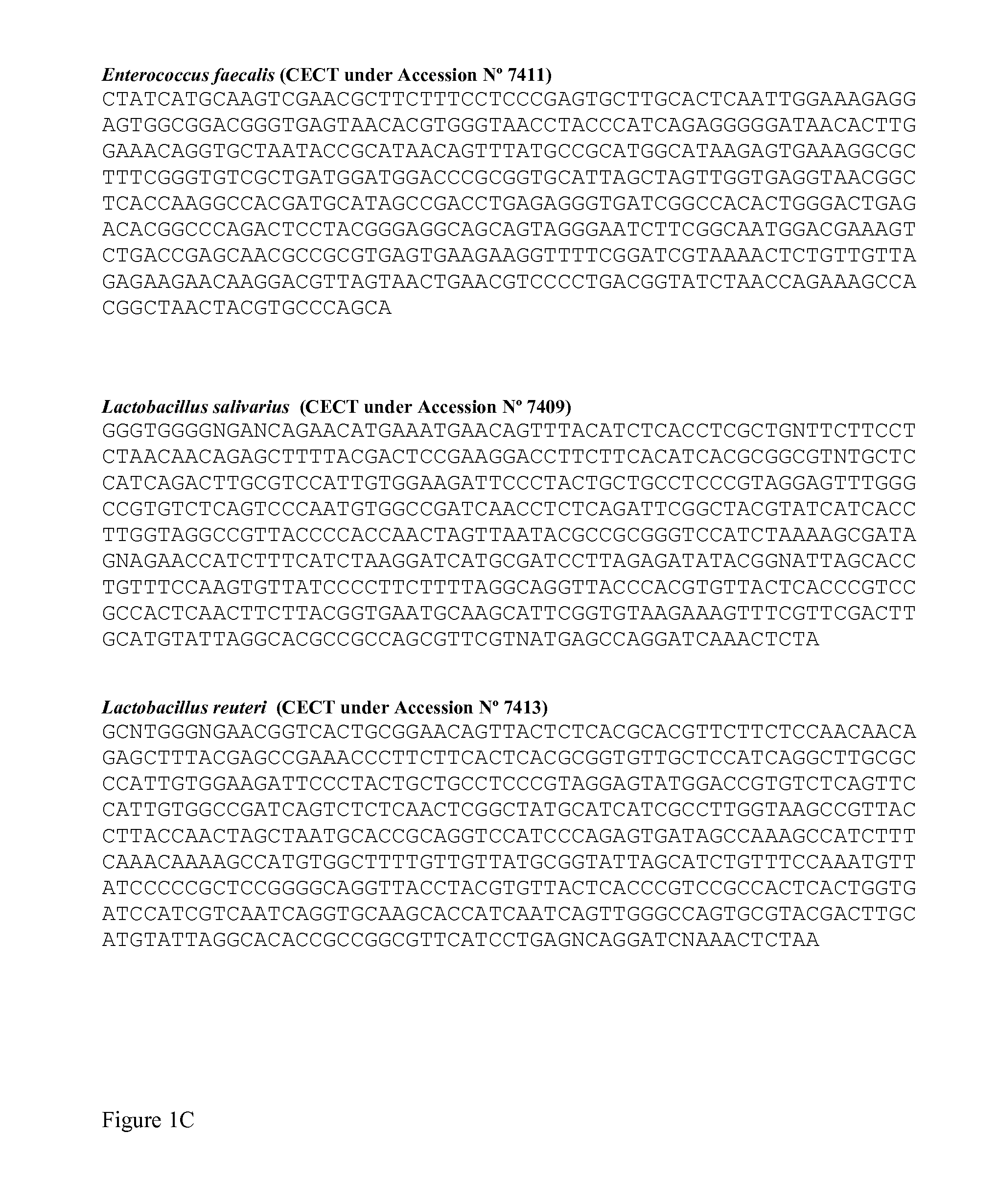Mammalian milk microorganisms, compositions containing them and their use for the treatment of mastitis
a technology of milk microorganisms and compositions, which is applied in the field of milk microorganisms, compositions containing them and their use for the treatment of mastitis, can solve the problems of mastitis being an important problem, precocious and undead weaning, and increasing the morbidity and mortality rate of offspring, so as to reduce the incidence of mastitis
- Summary
- Abstract
- Description
- Claims
- Application Information
AI Technical Summary
Benefits of technology
Problems solved by technology
Method used
Image
Examples
example 1
Isolation of Probiotics from Mammal Milk
[0066]Fresh milk samples (2 ml except in the case of the bitches where only 0.5 ml were collected) were obtained from 23 healthy women at day 6-14 after labour; 8 sows at day 5 after labour, 9 bitches at day 2-10 after labour and 4 cows at day 2 after labour.
[0067]Neither the women nor the animals had complications during labour and no antibiotic therapy was administered in the last two weeks prior milk sample collection. All milk samples were immediately frozen at −80° C.
[0068]In order to isolate bacterial strains from these samples, serial dilutions of 0.1 ml in peptone water were platted on MRS, APT, RCM, LM17, GM17 and Elliker agar plates at 37° C. in both aerobic and anaerobic conditions for 24-48 hours. Among the approx. 1200 colonies initially obtained, 120 (10%; include representatives of the different morphologies observed on the plates) were selected and subcultured in MRS agar at 37° C. in anaerobic conditions. Among them, we furthe...
example 2
Physiologic and Genetic Characterization
[0082]All these isolates were physiological and genetically characterized. For the identification of each probiotic strain, we performed a fermentation API 50CH (BioMerieux) analysis of the strains at 37° C. in anaerobic conditions for 24 and 48 hours, following the manufacturer instructions. The 24 hours results were summarized in Table I. A positive fermentable substrate is that with a value higher than 3.
[0083]Due to the low specificity of the API characterization, we also performed the analysis of the 16S rRNA sequences of the selected bacterial strains. The 16S RNA sequence of the selected bacteria and their RAPD-PCR profile are shown in FIG. 1. The results obtained led to the classification of the bacterial strains as indicated above. With this classification the bacterial strains of the invention were deposited according to the Budapest Agreement at the CECT—Colección Espanõla de Cultivos Tipo—, Valencia (Spain) on Apr. 17, 2007 and acc...
example 3
Selective Screening of the Strains
Example 3a
Transfer to the Mammary Gland after Oral Intake
[0097]Once the different candidate strains were obtained from mammal milk as indicated in the first selection criteria, the following step in the selection process described in the present invention is that bacteria should be able to be transferred to milk after oral intake or topic application. In order to test this capability, the putative strains were genetically labelled as described previously (WO 2004 / 003235) and orally administered to pregnant rats as animal model. Total lactobacilli, bifidobacteria and enterococcus were measured in milk and neonatal fecal samples. Moreover, specific transfer of bacteria was analyzed by PCR screening of the colonies obtained from the milk of lactating rats and from the neonatal faeces.
[0098]Four pregnant Wistar rats were orally inoculated with 108 cfu of genetically-labelled strains vehiculated in 0.5 ml of milk every two days from two weeks before labo...
PUM
| Property | Measurement | Unit |
|---|---|---|
| diameter | aaaaa | aaaaa |
| pH | aaaaa | aaaaa |
| pH | aaaaa | aaaaa |
Abstract
Description
Claims
Application Information
 Login to View More
Login to View More - R&D
- Intellectual Property
- Life Sciences
- Materials
- Tech Scout
- Unparalleled Data Quality
- Higher Quality Content
- 60% Fewer Hallucinations
Browse by: Latest US Patents, China's latest patents, Technical Efficacy Thesaurus, Application Domain, Technology Topic, Popular Technical Reports.
© 2025 PatSnap. All rights reserved.Legal|Privacy policy|Modern Slavery Act Transparency Statement|Sitemap|About US| Contact US: help@patsnap.com



